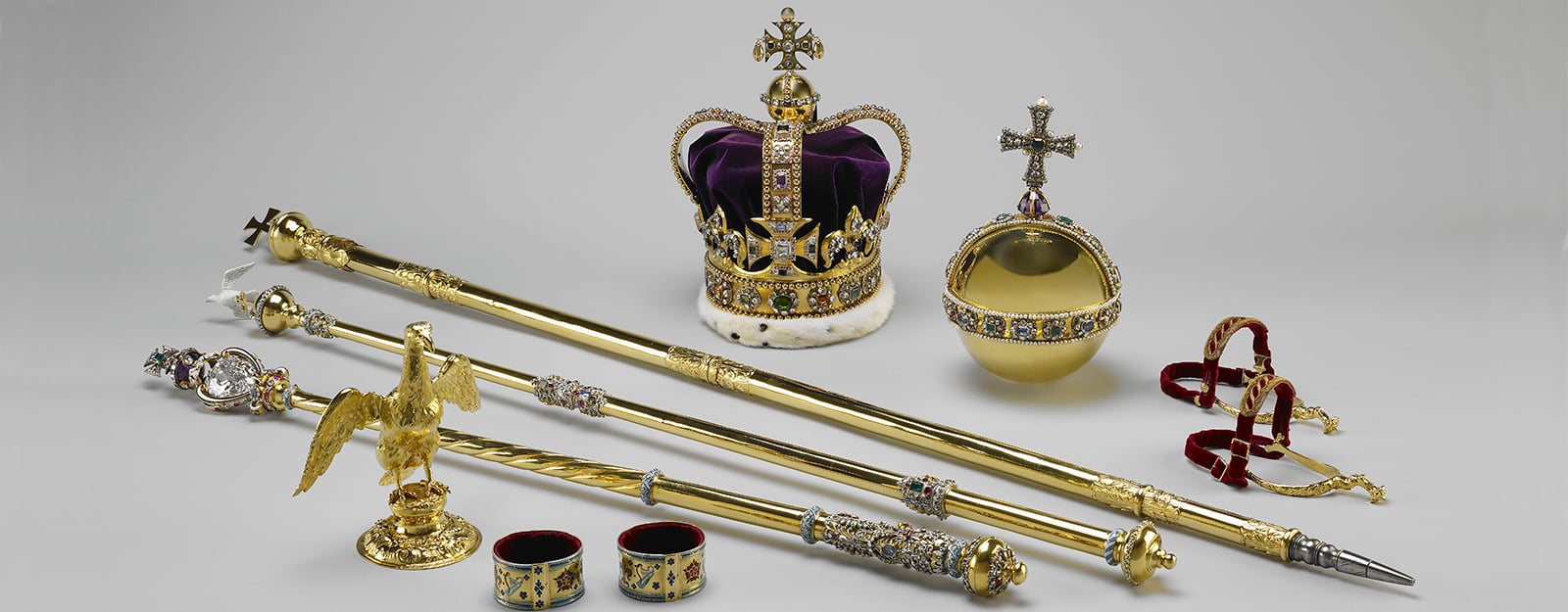
The Crown Jewels are the most complete collection of royal regalia in the world
The regalia of Charles II
The regalia made for Charles II's coronation in 1661 forms the central part of the Crown Jewels today. The existing Crown Jewels had almost entirely been lost or destroyed during the Commonwealth and the king therefore commissioned new pieces on his return to England from exile in 1660. Their design reflects a tradition stretching back to the twelfth century.
Ancient Ritual
The earliest surviving descriptions of an English coronation date from before 1000 AD. Many stipulated the use of crowns, rings and sceptres, but usually these items were made new for each monarch. It was only after the reign of Edward the Confessor – the last Anglo-Saxon king – that the tradition of a single, sacred collection of regalia emerged. One hundred years after his death, Edward was declared a saint, and the objects connected with him pronounced holy relics. A crown, said to have been his, was used at the coronation of Henry III in 1220, and then carefully retained for future monarchs. It was soon joined by an array of other regalia, including two rods and a gold spoon. Some were used at every coronation for 400 years, and it was these that were recreated during the Restoration.
The Interregnum
The medieval Crown Jewels had been almost entirely sold or destroyed in the mid-seventeenth century so new regalia was required for Charles II. During the 1620s, financial difficulties had caused Charles I to auction many treasures from the Jewel House in the Tower of London – although he didn't sell the principal items of regalia. Disagreements with Parliament however soon descended into civil war, and after 1642 the king's opponents eagerly took the Crown's London possessions. Following Charles's execution in 1649, gold plate and other items were sold to fund the new government, while St Edward's coronation regalia – the symbols of monarchy – were melted down at the Mint. The only item of medieval regalia which survived was the twelfth-century coronation spoon. The Royal Goldsmith Robert Vyner was tasked with supplying new Crown Jewels for Charles II's coronation in 1661.
Click on an object below to read more about how their designs reflected historic precedent.




